USB-C-Anschlüsse und -Kabel sind heutzutage allgegenwärtig. Die vielseitige Schnittstelle ermöglicht Strom-, Daten- und Videoübertragung in einem einzigen Standardkabel. Diese Vielseitigkeit bringt jedoch auch Verwirrung hinsichtlich der Funktionen mit sich. Wir werden oft gefragt: Kann jedes USB-C-Kabel Videosignale an externe Monitore oder Fernseher übertragen? Die kurze Antwort lautet: Nein. In diesem Artikel klären wir einige häufige Missverständnisse auf und erklären genau, was für die USB-C-Videokonnektivität erforderlich ist.
Inhaltsverzeichnis
USB-C-Videoübertragungsstandards
Damit ein USB-C-Kabel die Videoausgabe verarbeiten kann, muss es bestimmten Industriestandards entsprechen, die die Videoübertragung über die Schnittstelle ermöglichen. Die beiden wichtigsten Standards sind:
USB-C Alt-Modus
Alt Mode steht für „Alternate Mode“ und ermöglicht dem USB-C-Anschluss die Übertragung anderer Protokolle als Standard-USB-Daten. Für Video sind die relevanten Alt Mode-Protokolle DisplayPort und HDMI. Mit Alt Mode-Unterstützung kann ein USB-C-Anschluss DisplayPort- oder HDMI-Videosignale direkt ausgeben.
| DisplayPort Alt-Modus | HDMI Alt-Modus |
| Überträgt natives DisplayPort-Audio/Video | Überträgt HDMI-Audio/Video |
| Höhere Auflösungen und Bildwiederholraten | Begrenzt auf 4K 60 Hz |
| Unterstützung für Display Stream Compression | HDMI 2.0b-Geschwindigkeiten |
Ein USB-C-Kabel mit Alt-Mode-Funktion kann also HDMI- oder DisplayPort-KabelDies ermöglicht schlanke und komfortable Verbindungen zwischen Laptops, Mobilgeräten, Dockingstationen und externen Displays.
Bandbreitenvergleich
Die folgende Tabelle zeigt einen Vergleich zwischen den Bandbreitenkapazitäten von Standard-USB 3.2, DisplayPort über USB-C und HDMI über USB-C:
| Standard | Version | Maximale Bandbreite |
| USB 3.2 | Gen 2x2 | 20 Gbit/s |
| DisplayPort | 1.4 HBR3 | 32,4 Gbit/s |
| HDMI | 2.0b | 18 Gbit/s |
Wie Sie sehen, bietet DisplayPort die höchste Bandbreite im Vergleich zu USB-C und ermöglicht höhere Auflösungen und Bildwiederholraten im Vergleich zum HDMI-Alt-Modus. Beide sind für die Videoübertragung deutlich leistungsfähiger als Standard-USB-Daten.
Unterstützung für Auflösungen
Hier ist eine Aufschlüsselung der Auflösungen und Bildwiederholraten, die von beiden USB-C-Videostandards unterstützt werden:
DisplayPort Alt-Modus
- Bis zu 4K bei 240 Hz
- Dual 4K bei 144 Hz
- Bis zu 8K bei 60 Hz (DSC)
HDMI Alt-Modus
- Bis zu 4K bei 60 Hz
- Keine Komprimierungsunterstützung
Daher eignet sich DisplayPort besser für Spiele oder Videobearbeitung mit sehr hoher Auflösung und Bildwiederholfrequenz. Der HDMI-Alt-Modus deckt weiterhin die grundlegenden Anforderungen an eine 4K-60-Hz-Anzeige ab.
Thunderbolt 3 und 4
Thunderbolt 3 und das neuere Thunderbolt 4 sind eine Verbesserung gegenüber USB-C, indem sie Videoübertragung, PCIe-Daten, Strom und andere Hochgeschwindigkeitsdaten gleichzeitig unterstützen.Dies bedeutet, dass Thunderbolt-Kabel externe Grafikkarten, RAID-Speicher-Arrays und hochauflösende Displays nahtlos über einen einzigen Anschluss unterstützen.
Beide Thunderbolt-Generationen unterstützen zwei 4K-Displays oder ein 5K-Display. Dank der erhöhten Bandbreite – bis zu 40 Gbit/s für Thunderbolt 3 und bis zu 40 Gbit/s für Thunderbolt 4, Multi-Display-Konfigurationen können mit dem neueren Standard höhere Auflösungen und Bildwiederholraten erreichen.
Brauchen Sie Thunderbolt oder reicht der Alt-Modus?
Eine häufige Frage ist, ob Laptops vollwertige Thunderbolt 3- oder 4-Anschlüsse für die Videoausgabe benötigen. Die Antwort lautet: nicht unbedingt. Hier sind einige wichtige Punkte:
- Wenn nur Displays angeschlossen werden, verfügen Alt Modes über genügend Bandbreite
- Thunderbolt für externe GPUs oder PCIe-Zubehör erforderlich
- Die meisten Laptops verfügen über Alt Modes und Thunderbolt
- Thunderbolt bringt DisplayPort nativ mit – daher wird der Alt-Modus unterstützt
- Thunderbolt-Kabel funktionieren auch für Alt-Mode-Geräte
Der Hauptvorteil bei Videoanwendungen liegt darin, dass Thunderbolt-Kabel robuster konstruiert sind, um Probleme mit der Signalintegrität zu vermeiden. Sie bieten daher eine hohe Kompatibilität im gesamten Ökosystem.

Zusammenfassend lässt sich sagen: Die Videoausgabe über einen USB-C-Anschluss und ein USB-C-Kabel erfordert Alt Mode oder Thunderbolt-Unterstützung, um HDMI-, DisplayPort- oder andere Videosignale zu übertragen. Ohne diese Funktionen können USB-C-Kabel nur normale USB-Daten übertragen.
So erkennen Sie USB-C-Kabel mit Videounterstützung
Wie können Sie beim Kauf von USB-C-Kabeln leicht erkennen, ob Videoübertragung unterstützt wird? Achten Sie auf folgende Anzeichen:
Überprüfen Sie die Kabelmarkierungen
Schauen Sie sich die Kabelenden, Gehäuse und die bedruckte Hülle genau an. Hersteller drucken in der Regel Symbole oder Etiketten auf, die die Funktionen eines Kabels angeben:
- DisplayPort- und/oder HDMI-Beschriftungen bedeuten Alt Mode-Videounterstützung
- Das Thunderbolt-Symbol zeigt die Kompatibilität mit Thunderbolt 3 oder 4 an.
- VESA DisplayHDR-Zertifizierung bedeutet DisplayPort-Video bis zu 4K 120 Hz
Achten Sie also bei der Identifizierung videofähiger USB-C-Kabel auf diese Hinweise.
DisplayPort-Marketingbegriffe entschlüsseln: HDR, HBR2, HBR3
Bei der Bewertung von USB-C-Videokabeln stößt man auf viele verwirrende DisplayPort-Marketingbegriffe. Was bedeutet das alles? Hier einige Erläuterungen:
- HDR: Bezieht sich auf High Dynamic Range für sattere Farben und Kontraste
- HBR2 und HBR3: Hochbitratenmodi übertragen mehr Gbit/s über Kabel
- HBR2 = 17 Gbit/s: Verarbeitet 1440p 240Hz oder 4K 144Hz
- HBR3 >= 32 Gbit/s: Unterstützt 4K 240 Hz oder 8K 60 Hz
Jedes USB-C-Kabel mit DisplayPort HBR3-Unterstützung bietet die absolut höchste Leistung für Spiele- und Videoanwendungen – und ist damit auch zukunftssicher.
Spezifikationen prüfen
Ein Kabel, das Videoübertragung unterstützt, weist in seinen Spezifikationen oder seiner Beschreibung Standards wie Thunderbolt 3/4, DisplayPort 1.4 oder HDMI 2.0b auf. Vergleichen Sie diese Spezifikationen mit Ihrem USB-C-Laptop, -Tablet, -Smartphone oder -Display, um die Kompatibilität sicherzustellen.
In manchen Fällen hängen die Videofunktionen von den Leistungsspezifikationen und der Qualität eines Kabels ab. Zum Beispiel:
- Thunderbolt 4-Kabel benötigen eine Zertifizierung für den 40-Gbit/s-Betrieb
- DisplayPort 1.4 erfordert HBR3-Unterstützung für 4K 144 Hz
- Bei Kabeln von schlechter Verarbeitungsqualität können Kompatibilitätsprobleme auftreten
Überprüfen Sie daher vor dem Kauf und der Verwendung die Kabelspezifikationen gründlich.Renommierte Hersteller wie Cabletime testen und prüfen Kabel, um eine einwandfreie hochauflösende Videoleistung ohne Aussetzer, Rauschen oder andere Probleme zu gewährleisten.
Achten Sie auf die Angaben im Datenblatt
Es ist wichtig, die Datenblätter sorgfältig zu lesen und zu wissen, worauf Sie achten müssen. Achten Sie auf die folgenden wichtigen Details:
- Alt-Modus-Unterstützung – DisplayPort 1.4 oder HDMI 2.0
- Alle Bandbreiten oder Geschwindigkeiten in Gbit/s
- Wenn die Thunderbolt-Zertifizierung ausdrücklich erwähnt wird
- Verfügbare Längen für garantierte Videoleistung
- Ob Qualitätstests durchgeführt wurden
Durch die Einhaltung präziser Spezifikationen werden spätere böse Überraschungen vermieden!
Überprüfen Sie die Hardwarekompatibilität
Überprüfen Sie, ob beide USB-C-Geräte, die Sie anschließen möchten, videofähig sind. Beispielsweise deaktivieren einige Laptop-Hersteller die Videoausgabe über USB-C, selbst wenn der Anschluss selbst den DisplayPort Alt Mode- oder Thunderbolt-Standard unterstützt. Daher müssen Kabel, Quellgerät und Zieldisplay übereinstimmen.
Durch sorgfältiges Überprüfen der Kabelvideofunktionen und der Kompatibilität der angeschlossenen Hardware können Sie böse Überraschungen vermeiden!
Warum Hardwarekompatibilität wichtig ist
Um die Hardwarekompatibilität von USB-C zu verstehen, stellen Sie sich Videokabel wie Autobahnen zwischen Geräten vor. Der Datenverkehr läuft reibungslos, wenn:
- Der Quellanschluss unterstützt die Videoausgabe
- Die Kabelbandbreite entspricht den Signalanforderungen
- Die maximale Eingangsauflösung des Displays wird nicht überschritten

Jeder Engpass bedeutet, dass die Kabelkapazität verschwendet wird. Passen Sie Anschlüsse, Kabelleistung und Displayspezifikationen stets an die gewünschte Leistung an!
Häufige USB-C-Videoprobleme und -Lösungen
Während Standards wie USB-C Alt Mode und Thunderbolt den Anschluss von Geräten für die Videoausgabe sicherlich vereinfacht haben, können Benutzer dennoch auf Probleme stoßen:
Fehler bei der Videoübertragung
Wenn Ihr USB-C-Laptop kein Video ausgeben kann oder auf dem angeschlossenen Monitor ein leerer Bildschirm angezeigt wird, können Sie Folgendes versuchen:
- Verwenden Sie ein nachweislich gutes, videokompatibles USB-C-Kabel
- Kabel direkt anschließen, ohne Port-Expander/Hubs
- Schalten Sie die Anzeigeausgabeeinstellungen in den Videoeinstellungen des Betriebssystems um
- Aktualisieren Sie Grafiktreiber und Firmware für USB-C-Anschlüsse
- Probieren Sie verschiedene Anzeigeeingangsmodi (DisplayPort/HDMI) aus.
Bei Nicht-Videokabeln ist ein Upgrade auf ein Alt Mode- oder Thunderbolt-kompatibles Kabel unerlässlich. Probieren Sie auch verschiedene Kabel ähnlicher Modelle aus, da mangelhafte Verarbeitung die Zuverlässigkeit beeinträchtigen kann.
Schritt-für-Schritt-Anleitung zur Fehlerbehebung
Hier finden Sie eine Schritt-für-Schritt-Anleitung zur Behebung von USB-C-Videoproblemen:
- Überprüfen der Hardwarekompatibilität- Unterstützen Laptop, Kabel und Monitor alle erforderlichen Videomodi?
- Versuchen Sie es mit Direktverbindungen- Entfernen Sie alle Adapter/Hubs zwischen den Geräten.
- Überprüfen Sie die physischen Verbindungen- Setzen Sie die Kabel neu ein und prüfen Sie sie auf Beschädigungen/Ablagerungen.
- Monitoreingänge umschalten- Wechseln Sie zwischen den DisplayPort- und HDMI-Modi auf dem Display.
- Aktualisieren Sie die gesamte Firmware und alle Treiber- Auf Laptops und Displays über USB-C/Thunderbolt.
- Test mit geprüftem Kabel- Verwenden Sie ein Thunderbolt-zertifiziertes oder hochwertiges DP/HDMI-Kabel.
Durch systematisches Befolgen dieser Schritte können die meisten Probleme bei der Videoübertragung isoliert werden.Lassen Sie uns wissen, wenn die Probleme weiterhin bestehen!
Probleme mit Bildverzerrungen
Wenn Ihr USB-C-Videoausgang beschädigte, flackernde oder verzerrte Bilder anzeigt, deutet dies auf physische Schäden, elektromagnetische Störungen oder Probleme mit der Signalintegrität des Kabels hin. Mögliche Lösungen sind:
- Überprüfen Sie Kabelenden und Stecker auf Beschädigungen
- Stellen Sie sicher, dass die Kabelführungen nicht über Netzkabel verlaufen
- Ersetzen Sie defekte oder minderwertige Kabel
- Verwenden Sie geschirmte Kabel mit zusätzlicher Umflechtung
- Begrenzen Sie die Kabellänge auf maximal 4,5 Meter
Hochwertige Kabel wie die von Cabletimes sind so konstruiert, dass Bildverzerrungen über alle gängigen Kabellängen hinweg vermieden werden. Wir testen die Kabel streng, um eine perfekte Videoübertragung zu gewährleisten.
Faktoren für das Kabeldesign
Mehrere Aspekte der Kabelkonstruktionsqualität können die Integrität des Videosignals beeinträchtigen:
- Anzahl der Drähte und Kabeldurchmesser
- Verdrillungsverhältnis in Kabelpaaren
- Abschirmung vor EMI/RFI-Störungen
- Qualität der Vergoldung des Steckers
- Strukturelle Verbindungen und Abschlüsse
Durch die Analyse unter Labormikroskopen während der Videosignalübertragung lassen sich Designschwächen frühzeitig erkennen. Hochwertige Komponenten sorgen für mehr Widerstandsfähigkeit.
Kompatibilitätsverwirrung
Das USB-C-Ökosystem umfasst Geräte, Anschlüsse, Grafiktreiber, Kabel, Displays und sogar Betriebssysteme verschiedener Hersteller. Dies kann zu Kompatibilitätsproblemen führen, wenn die Komponenten nicht sorgfältig aufeinander abgestimmt sind:
- An den USB-C-Anschlüssen von Laptops fehlt möglicherweise die Videounterstützung, selbst wenn Thunderbolt vorhanden ist.
- Auflösungen/Bildwiederholraten hängen von Anschluss, Kabel und Displayspezifikationen ab
- Externe Displays können Macken aufweisen, die eine Anpassung der Betriebssystemeinstellungen erfordern
- Einige USB/Thunderbolt-Docks bieten keinen unkomprimierten Videoausgang
Testen Sie die Komponenten daher von Anfang bis Ende, bevor Sie sie in Ihrem gesamten Setup bereitstellen. Cabletime-Kabel Funktioniert nahtlos auf Windows-Laptops, MacBooks, Tablets und sogar Smartphones mit USB-C. Bei großen Multi-Monitor-Installationen sollten Sie jedoch vor der Einführung alles validieren.

Beispiele aus der Praxis
Hier sind einige echte Fallstricke bei der USB-C-Kompatibilität, auf die Sie achten sollten:
- Bestimmte Business-Laptop-Linien deaktivieren den Videoausgang über USB-C im BIOS
- Unterdimensionierte USB-C-Anschlüsse mit niedrigerer Auflösung
- Displays, die beim Aufwachen aus dem Ruhe-/Standbymodus eine erzwungene Aktualisierung benötigen
- Thunderbolt-Docks geben unkomprimiertes Video nicht weiter
Sofern sie nicht in jeder Konfiguration sorgfältig getestet werden, können scheinbar kompatible Komponenten immer noch Überraschungen bereiten!
Zukünftige Trends bei USB-C-Kabeln

USB-C setzt sich zunehmend als Einkabellösung für Strom-, Daten- und Videoübertragung durch und gewinnt zunehmend an Bedeutung. Jedes Jahr kommen mehr Laptops und Mobilgeräte auf den Markt, die die Vorteile von USB-C mit Thunderbolt-Unterstützung nutzen. Sogar Gaming-PCs und Zubehör verfügen über USB-C-Konnektivität. Werfen wir einen Blick auf die kommenden neuen Funktionen und Verbesserungen.
Höhere Auflösungen und Bildwiederholraten
Die Bildschirmauflösungen steigen kontinuierlich von 4K auf 5K und sogar 8K Ultra HD. Gleichzeitig erhöhen sich auch die Bildwiederholraten von 60-Hz- und 120-Hz-Panels auf 240-Hz- und 360-Hz-Displays. Um diese extremen Bildschirmauflösungen und -geschwindigkeiten zu unterstützen, erweitern neue USB-C-Kabel die Grenzen verschiedener Protokolle, darunter:
- DisplayPort 2.0 Kabel unterstützen bis zu 16K-Displays
- Thunderbolt 5-Entwicklung für 80 Gbit/s Durchsatz im Gange
- Display Stream Compression, um mehr Pixel über vorhandene Kabel zu packen
- Multiport-Displays kombinieren mehrere Kabel für enorme DPI
Erwarten Sie also, dass hochmoderne Videoformate die neueste Technologie erfordern. USB-C-Kabel Designs in den kommenden Jahren.
Der Marsch in Richtung 16.000
Obwohl 8K-Displays noch selten und teuer sind, werden diese ultrascharfen Auflösungen heute auch in semiprofessionellen Anwendungen eingesetzt. Und die Industrie schreitet mit der Verbesserung der Komprimierungstechnologien weiter in Richtung 16K voran. Um 16K verarbeiten zu können, werden Kabel der nächsten Generation immer anspruchsvoller:
- DisplayPort 2.1 in der Entwicklung, verspricht 128 Gbit/s Bandbreite
- Thunderbolt 5 im Design, mit Zielgeschwindigkeiten von bis zu 80 Gbit/s
- Weniger Pixel nötig dank Display Stream Compression
- Multiport-Verkettung mehrerer Kabel für Spitzenschnittstellen
Der Vormarsch in Richtung fotorealistischer 16K+-Videos geht weiter, ermöglicht durch den Durchbruch bei neuen Hochgeschwindigkeitskabeln!
Längere, ausgedehnte Läufe
Spezielle USB-Glasfaserkabel ermöglichen für Nischenanwendungen bereits eine Reichweite von bis zu 100 Metern. Neue Kabelspezifikationen ermöglichen es jedoch, mit herkömmlichen kupferbasierten USB-C-Kabeln größere Entfernungen ohne Signalverstärker zu überbrücken. Diese erweiterten Kabel eignen sich für große Konferenzräume, Hörsäle und sogar Stadien, die 4K-Videos an verteilte Bildschirme übertragen müssen.
Die Reichweitengrenzen von Kupferkabeln erweitern
Dank neuer Techniken können herkömmliche USB-C-Kupferkabel eine größere Reichweite erreichen als zuvor:
- Hybrid-Glasfaser-Koaxialkabel für Strecken von 30–50 m
- Signalentzerrungs- und -verstärkungs-ICs
- Hochwertigere Abschirmung und Anschlüsse
- Repeater-Hubs alle 20-30 Meter
Während Glasfaser für große Entfernungen nach wie vor die beste Lösung ist, werden bei der Kupferkabeltechnologie die Kosten und die Flexibilität immer weiter verbessert.
Unterstützung für Mobilgeräte und Smart-TVs
Wir werden sehen, dass USB-C weiterhin herkömmliche Anschlüsse für die Videoausgabe an Smartphones, Tablets und Fernsehern ersetzt. Alt Mode DisplayPort und HDMI ermöglichen den direkten Anschluss mobiler Geräte an externe Displays über einen einfachen, reversiblen Stecker. Und Smart-TVs integrieren USB-C-Anschlüsse, um HDMI-Eingänge durch eine einzige standardisierte Buchse zu ersetzen.
Egal, ob Sie mehrere Monitore an Ihrem Laptop-Arbeitsplatz betreiben oder Handyspiele auf den Großbildfernseher übertragen, mit USB-C sind Sie bestens gerüstet.
Konvergenz rund um USB-C
Die Verbreitung von USB-C beschleunigt sich mit jeder neuen Gerätegeneration in folgenden Bereichen:
- Laptops – Die meisten Modelle verfügen jetzt über USB-C
- Tablets – iPad Pro mit USB-C-Ladefunktion und -Konnektivität
- Telefone – Flaggschiff-Androids mit DisplayPort-Unterstützung
- Monitore – USB-C ersetzt HDMI & DisplayPort
- Fernseher – Hinzufügen von USB-C-Eingängen für die Displaykonnektivität
Mit der zunehmenden Verfügbarkeit von Anschlüssen wird USB-C als universelle Alternative zur Videoausgabe auf allen Geräten mit Bildschirm immer praktischer!
Abschluss
USB-C-Kabel unterstützen trotz ihres täuschend kompakten Anschlussdesigns nicht automatisch Video. Egal, ob Sie DisplayPort- oder HDMI-Video von einem Laptop, Tablet oder Smartphone auf externe Bildschirme übertragen möchten – die Verbindung über USB-C erfordert spezielle Kabelfunktionen. Durch die Einhaltung branchenüblicher Videoübertragungsstandards wie USB-C Alt Modes oder Thunderbolt und die Überprüfung der Hardwarekompatibilität können Anwender modulare Workflows erstellen.Bildschirmauflösungen und Bildwiederholraten entwickeln sich ständig weiter. Wählen Sie zukunftssichere USB-C-Kabel wie die von Cabletimes, um Schritt zu halten. Wir beraten Sie gerne zur Multi-Display-Bereitstellung oder zur Fehlerbehebung bei der USB-C-Konnektivität.
Verwandte Fragen
Hier sind Antworten auf einige häufige Leserfragen:
Wie kann ich feststellen, ob mein USB-C-Kabel die Videoausgabe unterstützt?
Überprüfen Sie Kabelenden und Verpackung auf DisplayPort- oder HDMI-Logos. Überprüfen Sie außerdem, ob in den Spezifikationen „DisplayPort Alt Mode“, „HDMI Alt Mode“ oder hohe Auflösungen wie 4K bei 60 Hz angegeben sind. Diese weisen auf die Videofähigkeit hin.
Welche Geräte sind mit USB-C-Videokabeln kompatibel?
Die meisten modernen Smartphones, Tablets und Laptops unterstützen USB-C-Videoausgang, einige mit einer Auflösung von bis zu 8K. Hochwertige Monitore, Fernseher und Videoprojektoren verfügen ebenfalls über einen USB-C-Videoeingang. Überprüfen Sie vor dem Kauf von Kabeln die genaue Gerätekompatibilität.
Gibt es Unterschiede in der Videoqualität zwischen verschiedenen USB-C-Kabeln?
Ja – günstigere USB 2.0- und USB 3.0-Kabel bieten eingeschränkte oder gar keine Videoübertragung. USB-C Alt Mode-Kabel unterstützen zwar hochauflösende Videoübertragung, die Qualität der Videoübertragung kann jedoch durch Faktoren wie Kabelqualität, Abschirmung und Länge beeinträchtigt werden. Premium-Kabel reduzieren Störungen und sorgen für stabilere Verbindungen. Premium-Optionen wie Thunderbolt 3 bieten makellose Qualität.
Kann ich einen USB-C-auf-HDMI-Adapter mit jedem USB-C-Kabel verwenden?
Leider nein. Das USB-C-Kabel selbst muss Video-Alternativen unterstützen, um mit Adaptern zu funktionieren. Bei Verwendung eines reinen Datenkabels mit einem Videoadapter wird kein Videosignal an Ihr HDMI-Display ausgegeben. Überprüfen Sie immer zuerst die Kabelspezifikationen.
Welche Einschränkungen gibt es bei der Verwendung von USB-C für die Videoübertragung?
Die Haupteinschränkungen liegen in den von Ihren Anschlüssen und Kabeln unterstützten Standards. Beispielsweise ermöglicht Thunderbolt 3 höhere Geschwindigkeiten als herkömmliches USB-C. Auch die Kabellänge spielt eine Rolle – längere Kabel können zu Signalverschlechterungen führen. Insgesamt ist USB-C äußerst leistungsfähig, achten Sie jedoch sorgfältig auf die Spezifikationen!

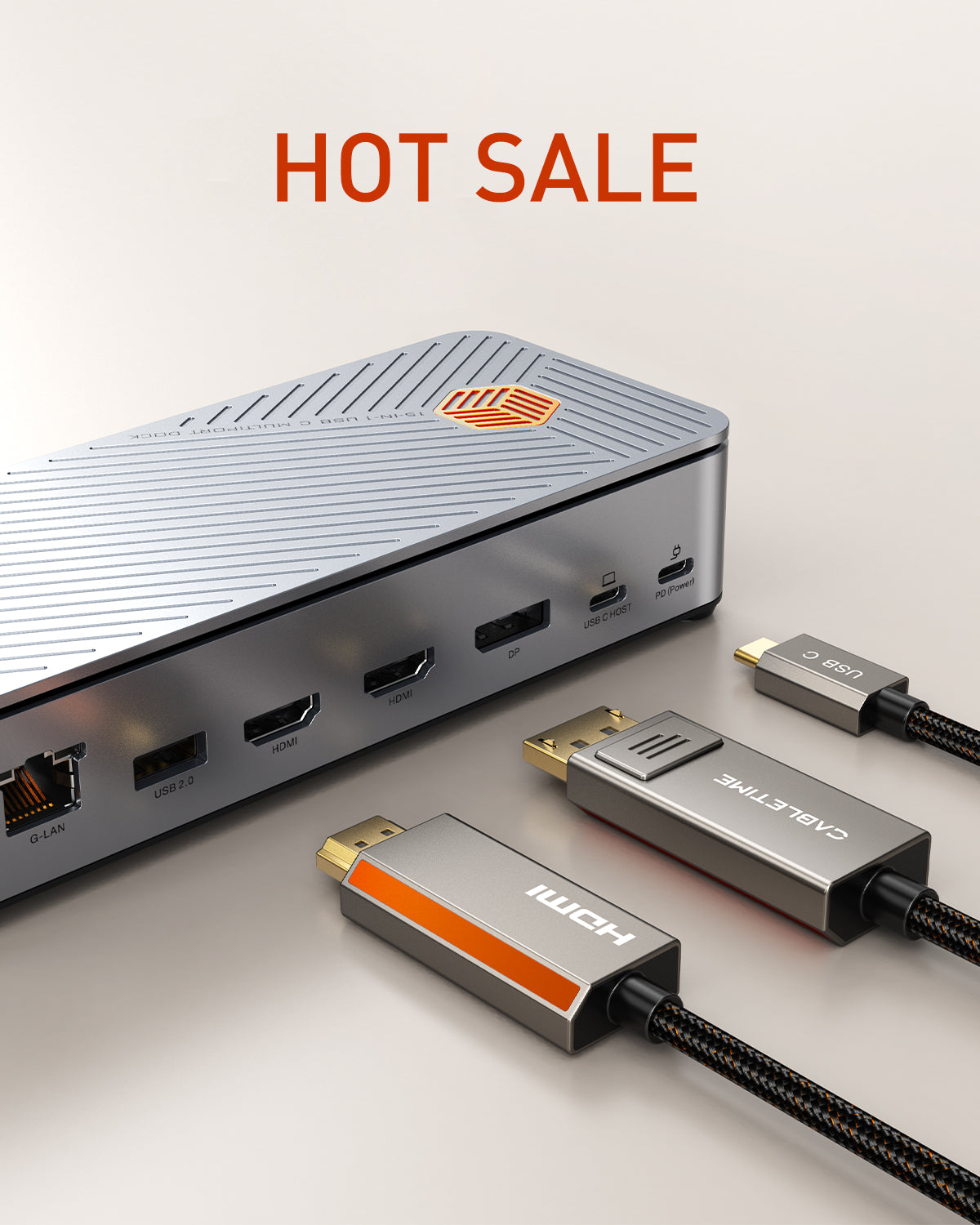
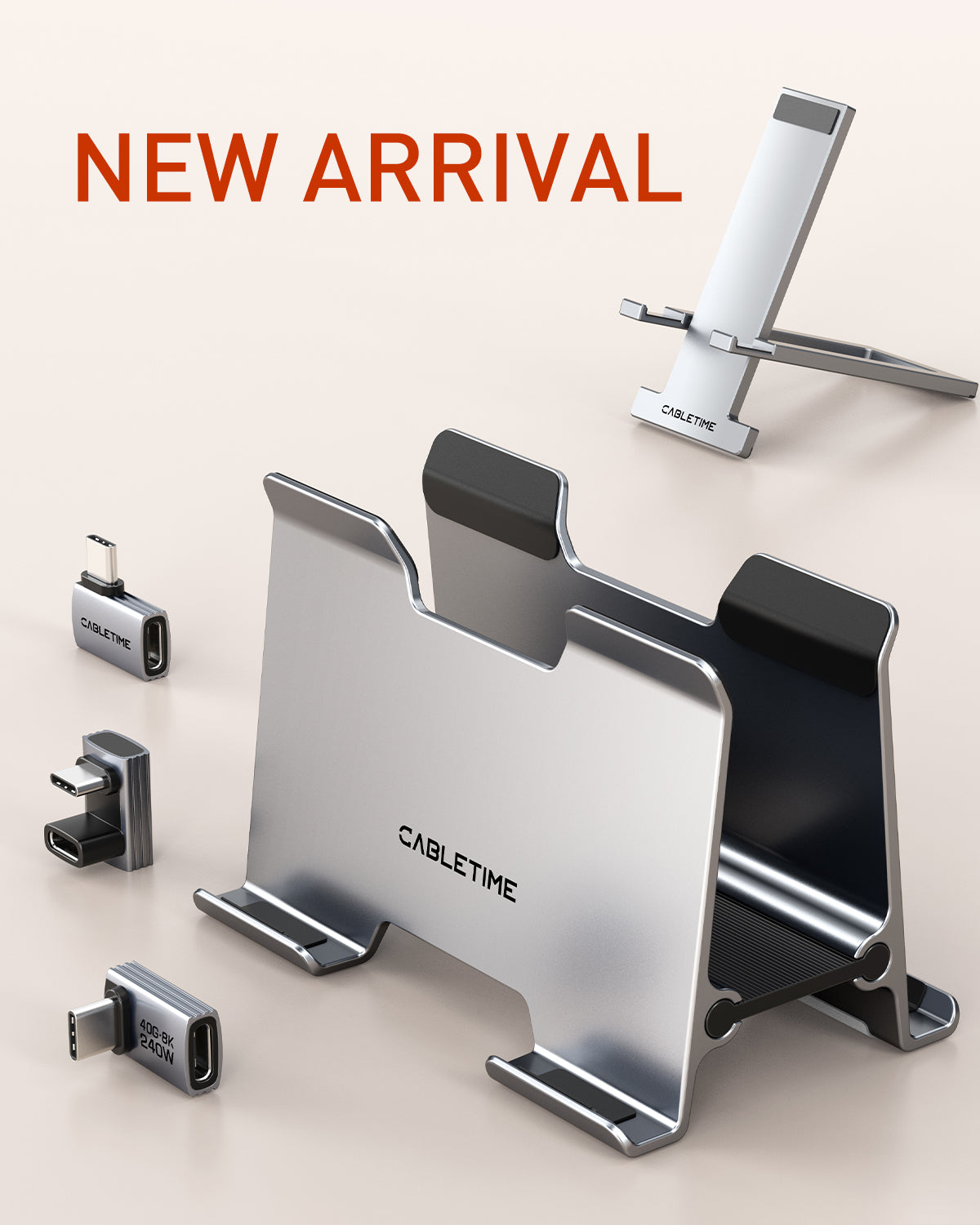
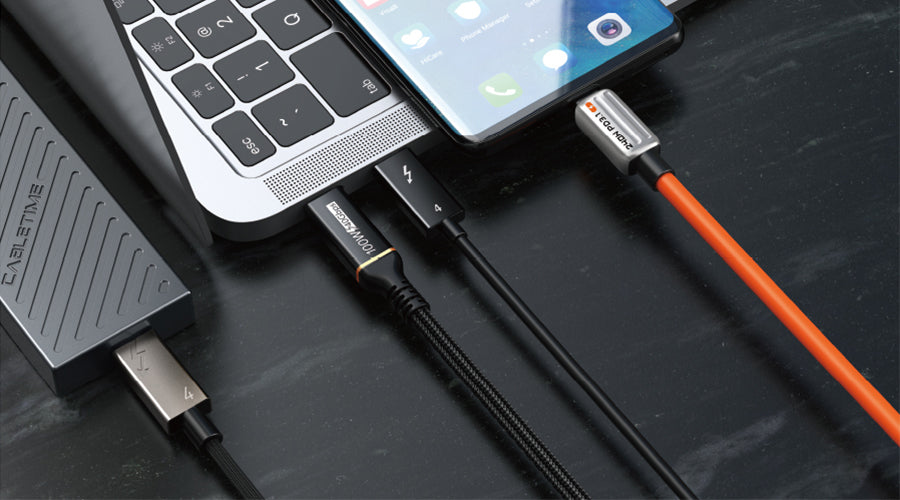
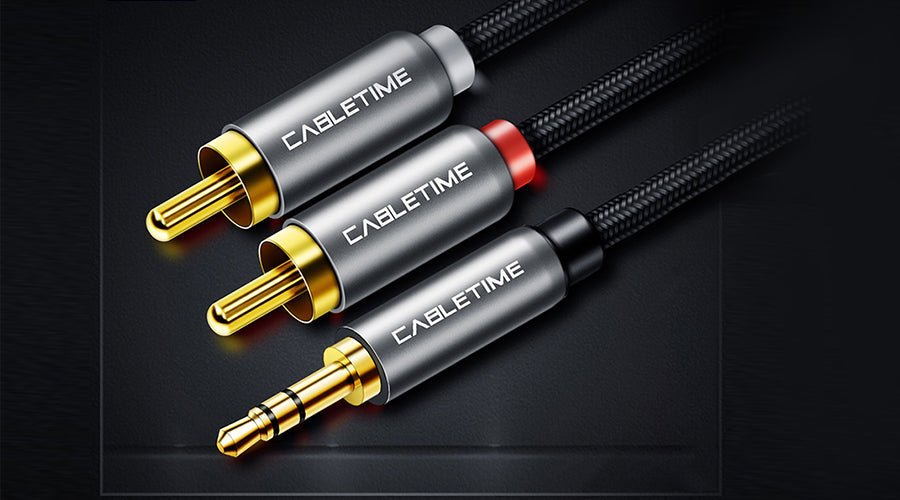
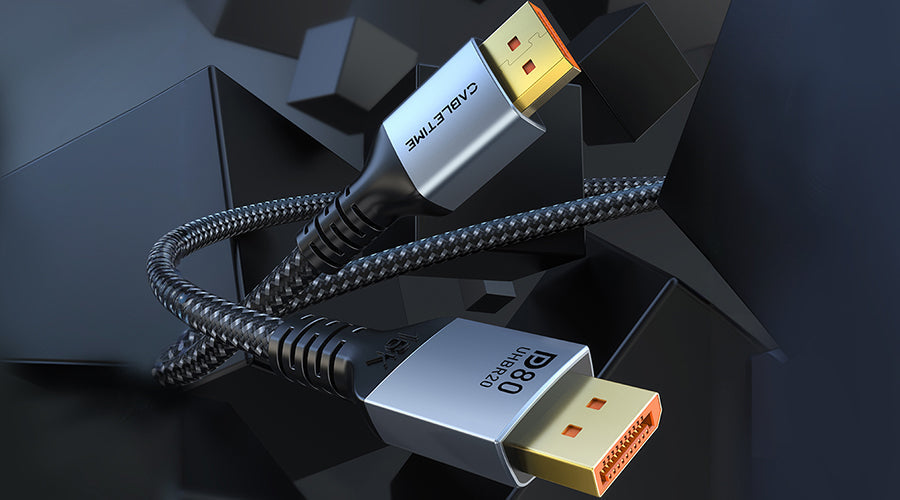
1 Kommentar
Tom
Do you sell a cable for data transmission with a male lightning connector to a male USB-C connector? I’m using this to connect my iPhone 13 to my Tascam Portacapture X8 recorder…. If so, please give me the link… Thanks… Tom
Hinterlassen Sie einen Kommentar
Diese Website ist durch hCaptcha geschützt und es gelten die allgemeinen Geschäftsbedingungen und Datenschutzbestimmungen von hCaptcha.